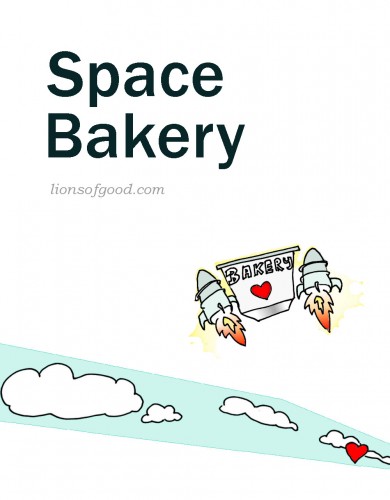
The Seed Sower teaches that "everyone" is not your customer
Hearken; Behold, there went out a sower to sow: And it came to pass, as he sowed, some fell by the way side, and the birds of the air came and devoured it up. And some fell on stony ground, where it had not much earth; and immediately it sprang up, because it had no depth of earth: But when the sun was up, it was scorched; and because it had no root, it withered away. And some fell among thorns, the thorns grew up, and choked it, and it yielded no fruit. And others fell on good ground, did yield fruit that sprang up and increased; and brought forth, some thirty, and some sixty, some an hundred. He said unto them, He that has ears to hear, let him hear. — from the Parable of the Sower
You know what the problem is? Free will. Everyone wants what they want. But if you make the mistake of trying to please everyone, you will please no one.
Just like in this children’s tale: A man, his boy and their donkey were happily walking to the market with their donkey beside them, when someone yelled, “What a useless donkey!” So the father put his boy on it. Later, someone sneered, “What a lazy boy! His should let his old man ride it instead!” So the boy hopped off and his father got on, only to have a woman snarl at him, “What a selfish man, chilling on the donkey while his son trudges in the heat.” Not knowing what else to do, the man and his son found a pole, bound the donkey’s feet to it and hoisted it over their shoulders. They were about to cross a bridge to enter the market, when everyone noticed the ridiculous sight and started to shout, mock, jeer and laugh. This startled the donkey, making it kick violently until it freed one of its legs. This made the boy drop his end of his pole, and in the struggle, the donkey fell over the bridge, into the river below and drowned.
The moral of the story? Try to please everyone and a donkey dies. I leave it up to you to decide who or what the donkey represents.
What makes a 10 year old happy is very different from what makes a 40 year old happy. What makes a man happy will not make a woman happy. What makes a teenage girl happy will not make a middle-aged woman happy. Or single person vs married couple with children; pregnant mom vs mom with 1-year old, etc.
In order to give exceptional service to someone, you must first decide who you want to give an exceptional experience to. And indirectly, this means you must also decide who you turn away. To decide who to attract and who to repel, you must answer this question:
Who is your Ideal Customer?
Like the fertile ground in the Parable of the Sower, there are people who are most receptive to what you offer. Meanwhile, there are also the people you prefer to have as customers, can serve best, and are most valuable to you. Your Ideal Customer is the intersection of these two groups of people:
Your Ideal Customer is:
1) someone most receptive to you and what you offer,
2) someone whose life will change when they use what you give, and
3) someone you love to— and you’re best suited to —serve.
What defines a “receptive” customer? It depends entirely on your goals. If your goal is to teach, then it’s someone who’s most willing and able to learn and someone you can teach the best.
If your goal is to make money, then it’s someone you can offer the most value to, who in return happily gives you more money in his/her lifetime than any other customer. In other words, someone who represents the greatest Lifetime Value in your business.
When you discover who your Ideal Customer is after researching and soul searching, design everything to be the perfect experience for him (or her).
Finally, imagine this: you’re in a crowded bar and you overhear your Ideal Customer describing a problem that you have the perfect solution for. How would you introduce yourself?
This is a very challenging question that many shy away from. But solve this riddle and you’ll have one of the most valuable assets in your business: your Unique Selling Proposition (USP) — the ringing message that pierces through the fog and beckons your Ideal Customer like a lighthouse.
Focus on your Ideal Customer, then craft your USP to be irresistible to him or her.



Add your comment: